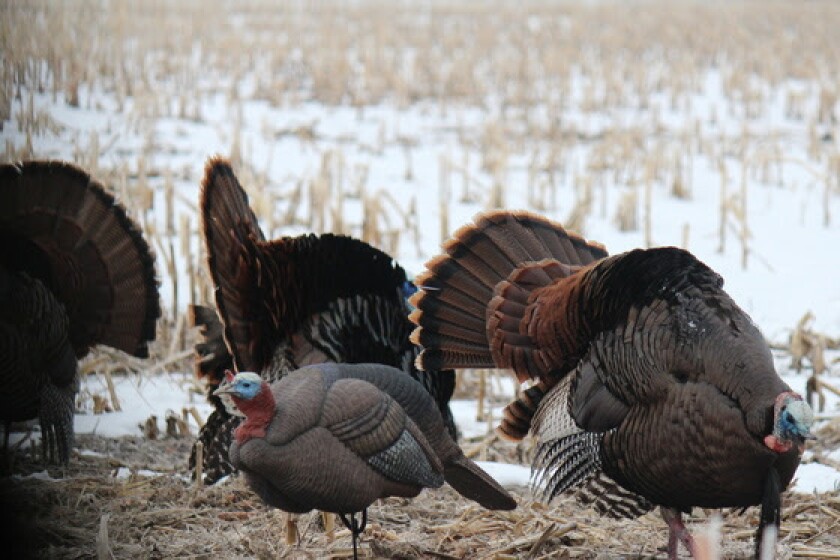PIERRE, S.D. — Timely rains across South Dakota have set the stage for an excellent pheasant hunting season in 2022.
That’s according to the recently released from South Dakota Game, Fish and Parks, which indicates the additional moisture in prime pheasant habitat country has helped break the drought conditions that plagued much of the territory during the 2021 season.
ADVERTISEMENT
“South Dakota experienced spring and summer rains across much of the primary pheasant range, which have been very positive for nesting and brood-rearing habitat,” the report reads. “These rains turned much of the primary pheasant range lush and green, providing a surge in plant growth beneficial for nesting and brood-rearing habitat.”
The primary pheasant habitat zone occupies the east-central portion of the state and runs from the North Dakota border and Nebraska border.
The Ringneck Outlook essentially replaced the traditional pheasant brood count survey, which was discontinued in 2020 after 70 years. The new report is not based on science-backed numbers and is compiled through more anecdotal sources than its predecessor.
Tom Kirschenmann, director of wildlife for South Dakota Game, Fish and Parks, indicated last month that conditions did indeed look good for hunters hoping to bag some birds this fall.
“We’re in a really, really good spot right now when it comes to pheasant hunting and pheasant production out there right now,” Kirschenmann told the GFP commission at its meeting in July. “Since three or four months ago, we’ve had some significant rainfall across the state, in particular in the primary pheasant range. Habitat conditions look fantastic out there right now.”

The combination of mild winters, such as the one in 2021-22, and normal temperatures and precipitation in the spring and summer have traditionally provided a boost to pheasant health and numbers, Kirsechnman said. Bird survival over the winter was likely excellent, according to the report, which means more nesting hens in the spring.
Rains also mean more water and food for young pheasants, which increases the likelihood for survival during the crucial first four to six weeks of life.
ADVERTISEMENT
“In the grand scheme of things, habitat conditions look great, whether it be finalizing those initial nesting attempts or renest attempts, we’re going to have quality habitat out there,” Kirschenmann said. “With great habitat, we’re going to have a brood habitat where those hens are going to be raising those young, and with that lush habitat comes a high number of bugs and insects, which is the primary food source for those young birds.”
Those older birds who were able to come through the mild winter are also more likely to survive the occasional severe weather event that can roll through during the summer, Kirschenmann said.
“We’ve had significant storm events all across South Dakota, not just in pockets. The great thing about those is that typically as birds get a little bit older they can survive those types of events,” Kirschenmann said in July. “Very localized events can certainly have an impact on bird numbers, but when you look at it from a statewide perspective, we don’t see or forecast a negative impact to pheasant production out there.”
The pheasant hunting season annually provides a major positive impact to the state economy, drawing hunters from inside the state, outside and state and even internationally. In 2021, the South Dakota Game, Fish and Parks estimates that resident hunters generated $86.4 million in revenue for the state, while non-resident hunters brought in $160.4 million, for a total of $246.8 million.
Resident hunters, which numbered 54,411 last year, and non-resident hunters, which numbered 75,606, harvested 473,728 and 593,695 birds, respectively, for a total of 1,067,423 total, according to statistics from South Dakota Game, Fish and Parks.
Brown County topped the list of dollars generated by resident and non-resident hunters in 2021, with $4.2 million and $12.4 million brought in, respectively, for a total of $16.6 million. Lyman County was second with $2.4 million and $9.3 million, totaling $11.7 million; Brule County was third with $2.3 million and $9.2 million for a total of $11.5 million and Tripp County came in fourth with $2.2 million and $9 million for a total of $11.3 million.
Davison County just missed the top 10, coming in 11th with $2.1 million and $5 million, totaling $7.1 million.
ADVERTISEMENT
Officials hope to see this year’s pheasant season at least match, if not exceed those numbers. And while conditions look positive for the start of the season, there are potential challenges every year.

“Certainly there is always the concern this time of year of all the haying activity going on, but that is nothing new. That is something that happens and coincides with the pheasant hatch and those new broods coming out,” Kirschenmann said.
The 2022 Ringneck Outlook also indicated that South Dakota Game, Fish and Parks is prioritizing cultivating good habitat for state wildlife, such as the kind found on land enrolled in the Conservation Reserve Program. The GFP is looking at enrolling the James River Watershed Conservation Resource Program (CREP) to the fully allocated 100,000 acres and enrolling 25,000 in a new Big Sioux Watershed CREP.
But all in all, hunters of every stripe should find birds when they head out on the hunt in the coming weeks.
“We are very, very positive and very optimistic of what we’re seeing right now, just because of the rain events and what that has done for habitat conditions, and we anticipate those things will carry over into the fall,” Kirschenmann told the commission in July. “It’s great to have rain because it always has an impact on that necessary habitat for nesting and for brood survival and raising those young chicks out there. I would say things look beyond fantastic right now.”
The youth-only pheasant season runs from Sept. 24 to Oct. 2 in South Dakota. The resident -only pheasant hunting season runs from Oct. 8-10 and the traditional season from Oct. 15 through Jan. 31.














